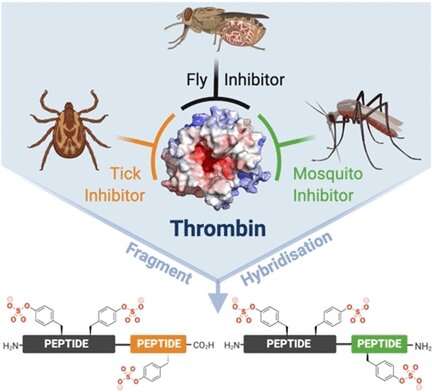Tsetse flies, which miraculously give birth to young people larger than mother, show us what science is about.
Photo credit: Lee Haines et al. 2020
In most of the animal kingdom, offspring are born smaller than their parents. Amazingly, several families of insects, including tsetse flies, break this simple rule, and mothers produce offspring of their own size or even larger.
An international team from the Liverpool School of Tropical Medicine and the Universities of Bristol, Greenwich, Stellenbosch and California Riverside has published an article in BioEssays describing this extreme reproductive strategy in tsetse flies, how it may have evolved and what it means to control this disease-transmitting insect.
It is difficult to fathom a woman who will give birth to a single child who weighs more than she does. Since we are familiar with human babies who weigh approximately 6% of their mother’s weight before pregnancy, this feat is unthinkable. Even a blue whale calf, the world’s largest baby weighing an impressive 2,700 kg at birth, is only 1.5% of the mother’s weight.
Imagine giving birth to a massive baby every ten days for the rest of your life! Unlike most insects, which are layers of eggs, female tsetse flies only give birth to one baby at a time. This results in a slow life story in which the females must be constantly pregnant and long lived in order to produce enough offspring to sustain the species. This kind of huge investment by mothers raises the question of how natural selection might favor this highly implausible trait.
In tsetse flies, the production of enormous offspring is possible thanks to two main factors. First, tsetse are on a diet consisting entirely of protein-rich blood, and they can ingest more than twice their body weight in blood every few days. This allows the female to produce large amounts of a very nutritious, milk-like substance to feed a fast-growing larva. Second, tsetse do not have the physiological limitations of mammals, such as the pelvic girdle, that prevent large babies from being born.
Understanding this strange reproductive strategy can help scientists reduce fly populations and control the diseases that tsetse flies transmit. Since tsetse larvae remain protected in their mother’s uterus and the pupae are hidden in the ground, control of tsetse populations is limited to attacking only adult flies. This is in stark contrast to controlling insects that lay eggs, such as mosquitoes, where all stages of insect development are susceptible to insect control campaigns. For tsetse, the slow breeding cycle means you only have to kill a few percent of the adult female flies per day to wipe out a population.
Currently, insecticides applied to cattle and artificial host-like baits such as “tiny targets” are being used successfully to control tsetse populations in areas with endemic diseases such as Uganda and the Democratic Republic of the Congo. These small, easy-to-use, and inexpensive insecticide-impregnated targets kill both male and female adult tsetse upon contact. Other tsetse control strategies, such as releasing sterile males or manipulating the fly microbiome, may be more difficult to implement as large numbers of tsetse must be raised in the field before treatment (radiation or genetic modification of symbiotic bacteria) and subsequent release.
A male tsetse fly
Tsetse populations clearly need to be controlled to prevent disease transmission. However, they should also be recognized as biologically fascinating creatures in their own right, as they contribute to biodiversity and biodiversity in endemic tsetse regions. In areas where human and animal health is not at risk, the preservation of these flies gives us insight into the development of pregnancy and motherhood.
Using tsetse flies as a model organism for studying pregnancy, we can study how environmental changes and stress affect the ability of mothers to produce high quality offspring. In an analogous situation, a baby that is malnourished may not be born strong enough to fight off infectious diseases.
Tsetse flies are a fascinating species that needs to be studied for many reasons beyond their unique reproduction. In the words of Professor Glyn Vale, OBE who has devoted his life to controlling and eradicating tsetse fly populations in many countries on the African continent:
“I went to Zimbabwe (then Rhodesia) as a young man to go for walks with lions and elephants, but I was ambushed by a tsetse fly who said it would be more fun and a better chance of being useful . It taught me that its distinct eating habits have seemingly inevitable consequences that are intertwined and affect wide-ranging issues such as the flies’ amazing reproductive system, their geographic boundaries, and their effects on human and animal health.
“All of these biological problems caused the road to eventually lead to lively debates about the appropriateness of very different technologies and control strategies. Tsetse, who I met 55 years ago, kept his promise to give me exactly what I was really looking for in his own way: a varied, adventurous and challenging walk on the wild side. “
More information about the project, which was led by Dr. Sinead English, directed at Bristol University and funded by the BBSRC and the Royal Society, can be found in the video “Burrowing for Knowledge”
Reference: Lee R. Haines et al. Big baby, little mother: tsetse flies are exceptions to the principle of small youthful size. BioEssays (2020). DOI: 10.1002 / bies.202000049






.jpg?quality=75&width=1200&auto=webp)


